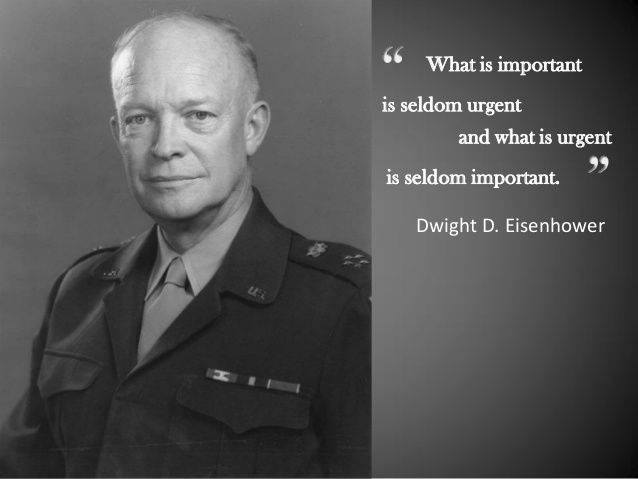My previous post covered an introduction to the Eisenhower Matrix as a framework to help conquer overwhelm and get important things done. As promised I wanted to post a follow up with a little more explanation and some pointers for implementing, if you’re interested.

Here’s a simplified explanation of the four quadrants:
- Important and Urgent – for example a big direct booking that needs some fine tuning to get over the line, a hot prospect client/investor/property can meet you/be viewed at short notice
- Important but Not Urgent – doing exercise, business development long term planning, working on a project that will make your business scalable [many aspects of your big annual goals will sit in this quadrant]
- Not Important but Urgent – various interruptions that break concentration, breaking your concentration to check every email and text the second you hear a “ping”, dealing with the person shouting the loudest
- Not Important and Not Urgent – activities that just waste time, procrastination, going off on a web surfing tangent when researching properties, excess time checking the latest news, facebook updates
Needless to say, the first priority goes to the tasks that are both Important and Urgent. However as much as possible, the proactive person aims to spend most of their time in the Important but Not Urgent quadrant. These are the activities that can generate big results for you. [These are called Quadrant 2 activities-I like to challenge myself, and peers in mastermind groups, on how much time we are carving out for Quadrant 2 activities].
As the famous Eisenhower quote goes:
“What is important is seldom urgent and what is urgent is seldom important.”
Without being mindful to prioritise effectively, a property entrepreneur can very quickly fall into the trap of rushing to deal with all the Urgent tasks (including the Urgent and Not Important) while the Important but Not Urgent tasks get pushed down the list.
After dealing with your Urgent and Important tasks, your second priority should always be to invest time on the Important tasks that are Not Urgent. Only after some time in quadrant 2 should you move onto the urgent but not important tasks.
As for things in the 4th quadrant, well you really want to start dropping these. This is an opportunity to create more time for the important things in your day.
Building this into your life
Like all good habits, this takes a period of intentionally phasing it in. However with a little effort, the practice of consciously filtering your tasks and incoming distractions based on their importance, will result in you becoming more productive as you do less of the Not Important things.
Plan ahead and start with the tasks that are important. Mastering this practice will give you a powerful advantage and a feeling of control in all areas you choose to apply it.
Now, because I know that life and business can throw all sorts at us, here’s an extra little hint that I learned from my accountability coach – schedule in a daily “chaos hour” to your diary. Use this time to finish off loose ends that originated from the Urgent and Important things cropping up earlier in the day. If you’ve had a good day with no major interruptions then use this time for more Important but not Urgent activities.

